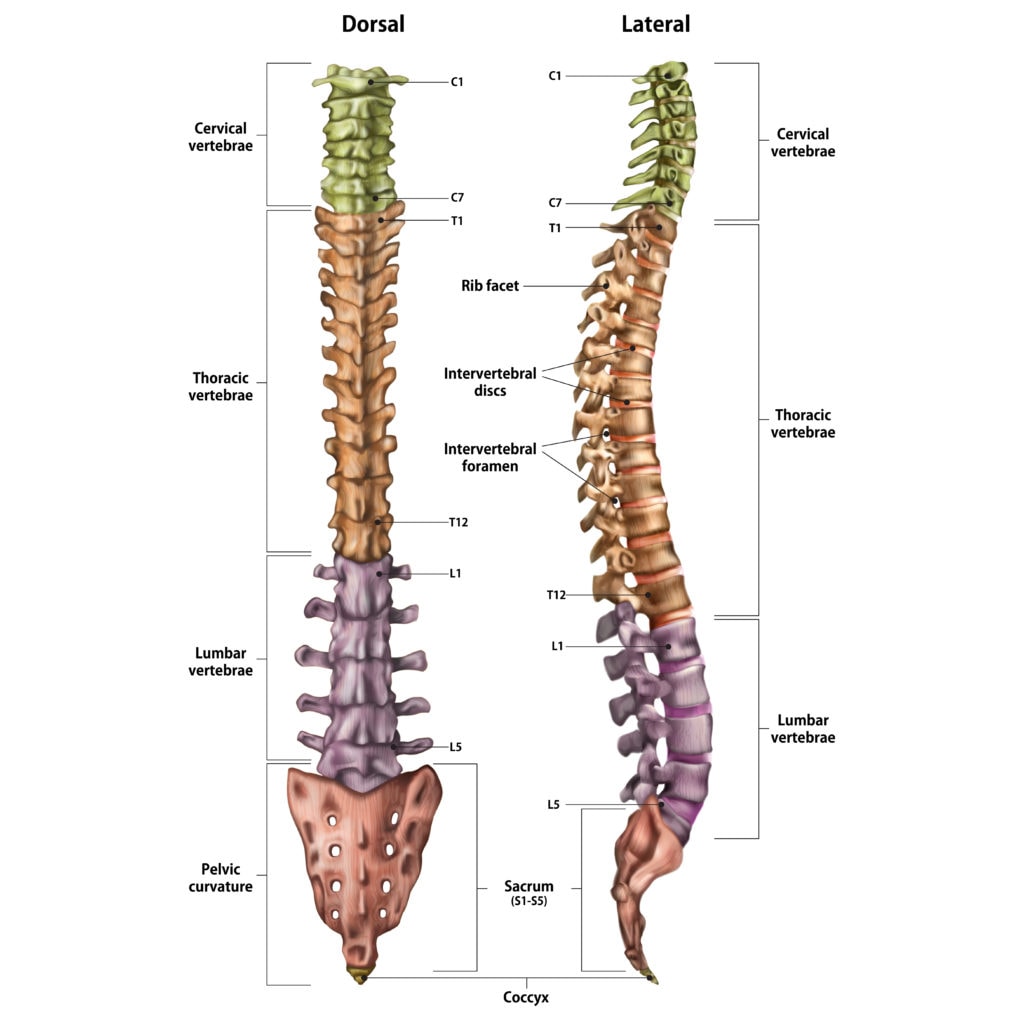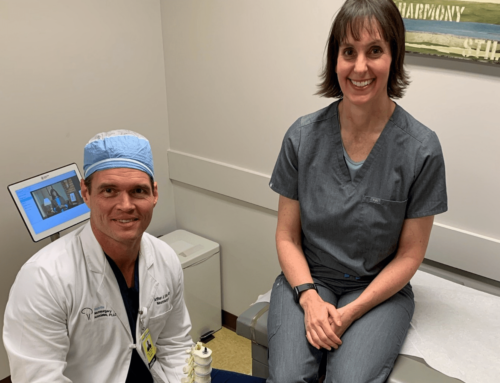Have you ever experienced back pain? If the answer is yes, know you’re not alone. According to the National Institute of Health, over 80% of adult Americans report experiencing back pain at some point in their life. While occasional pain may not be serious, several neurosurgical conditions can affect the back and require care and treatment by a board-certified neurosurgeon. Learn more about the spine, common spinal conditions and treatments.
What is the spine?
The spine is made up of the spinal column and cord. The bones—or vertebrae—that run down the back make up the spinal column. The bones are separated by discs, which work to absorb shock, allow mobility and hold the spine together. The spinal cord includes nerves that run from the brain down the center of the back, within the spinal column. All nerves outside the spinal cord make up part of the peripheral nervous system, which includes the nerves that make pathways through the body. The peripheral nervous system and central nervous system, which includes the brain and spinal cord, carry information throughout the body to allow for normal and complex body functions.
The spine has four regions: cervical, thoracic, lumbar and sacral. The cervical spine includes the upper-most portion of the spine, in the neck. The thoracic spine is the mid-section of the spine, and the lumbar spine is the lower back. The sacrum is the bottom of the spine, between the end of the lumbar region and tailbone.

Common spinal conditions
The spine can become damaged by trauma or degenerative disease. When spinal damage occurs, discs can “slip” or move, nerves can become compressed or vertebrae can break. The severity of injury will depend on the trauma to the spinal column and cord. Tumors can also occur along the spine. The most common conditions of the spine include:
- Spinal AVM. Arteriovenous malformations, or AVMs, are abnormal tangles of blood vessels. Spinal cord vascular malformations affect the blood flow through the spinal cord and cause back pain, numbness or weakness and can even cause permanent spinal damage if untreated.
- Spinal stenosis. The spine naturally degenerates with age, and to fix this it creates bone spurs and thickened ligaments. This can lead to narrowing of the spine. Stenosis can occur in any part of the spine, but it is most common in the lumbar (lower) and cervical (upper) regions.
- Spinal tumors. The dura are tough fibers covering the spinal cord. Tumors can happen anywhere along the spine. Extradural tumors occur outside of the dura; intradural-extramedullary happens between the spinal cord and the dura; and, intramedullary occur within the spinal cord itself.
- Herniated discs. A herniated disc, or slipped disc, is a condition where the center of the disc protrudes into the spinal canal. Herniation usually occurs after the tough ring around the disc tears. Aging and spinal trauma are the main causes of herniated discs.
- Spinal fractures. Falls, osteoporosis, trauma, tumors and infections can all cause spinal fractures. Not all fractures will require surgery; however, major fractures can result in serious long-term problems unless treated promptly and properly.
- Cervical and Lumbar Spondylosis. Spondylosis refers to degeneration of the spinal discs or bone spurs along the spine. This usually happens in the cervical (neck) or lumbar (low back) regions and is common among older patients.
- Cervical Spondylotic Myelopathy. Cervical Spondylotic Myelopathy is a degenerative disease common in patients over 50. With aging, the spinal cord can become compressed; this usually happens from normal wear-and-tear on the spine. Neck stiffness and numbness, tingling or weakness in the hands, arms and legs are all common symptoms of CSM.
- Post-Laminectomy Syndrome. Failed back surgery syndrome, or post-laminectomy syndrome, refers to persistent pain after a back surgery. Complications after surgery, persistent pain after a successful surgery or new pain arising after surgery can all lead to failed back surgery syndrome.
Symptoms will depend on the diagnosis, but often, patients with spinal nerve damage experience radiculopathy, which is radiating pain down the arms or legs. Other common symptoms of spinal damage include weakness or numbness and loss of mobility.
How are spinal conditions treated?
Treatment of spinal conditions depends on the diagnosis and individual patients. Board-certified neurosurgeons can provide both surgical and non-surgical care and treatment for spine conditions. Sometimes, spinal surgery may be needed, depending on the severity of the condition. For example, severe spine fractures may need to be treated with fusion. Fusion is a common spinal treatment that involves joining the vertebrae together with metal hardware and grafts to create one solid bone. However, advancing technology has allowed for more minimally invasive procedures and interventional treatments. Nashville Neurosurgery Associates is proud to provide cutting-edge neurosurgical care.
For more information or to learn more about the conditions we treat, please visit nashvilleneurosurgery.com/conditions. If you are having a medical emergency, please call 911.
At Nashville Neurosurgery Associates, our team of expert neurosurgeons treats a full range of neurosurgical conditions. We are one of the region’s leading centers for neurosurgical care and treatment, with 14 convenient locations across Middle Tennessee. For more information, please visit nashvilleneurosurgery.com.


